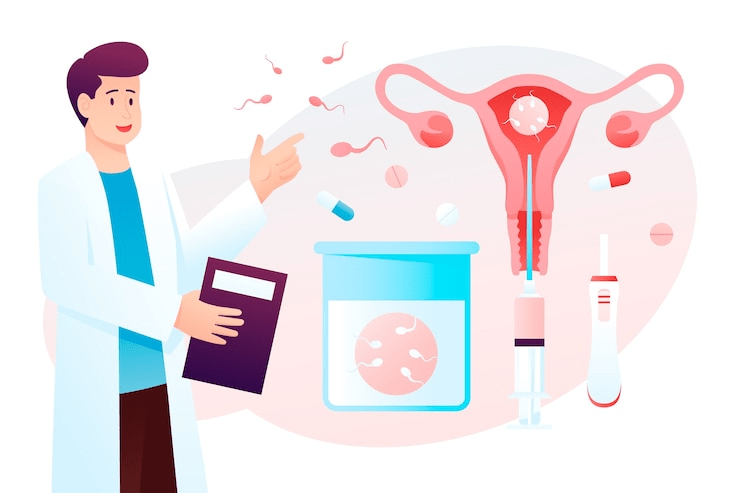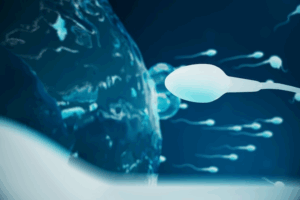
Gene therapy for azoospermia treatment
Introduction Male infertility, especially caused by azoospermia, affects millions of men worldwide. For those suffering from non-obstructive azoospermia, treatment options have been limited. However, thanks

Azoospermia, the complete absence of sperm in semen, impacts many men around the world. Fortunately, medical science has made significant strides in recent years. With the emergence of advanced treatment for azoospermia, men now have renewed hope of becoming biological fathers. These advanced options are not only effective but also personalized to each individual’s diagnosis.
To understand how advanced treatment for azoospermia works, we must first explore the two main types of azoospermia:
Several root causes can lead to azoospermia. These include:
Identifying the cause is the first step toward choosing the right treatment.
Accurate diagnosis is essential. The process usually involves:
After diagnosis, doctors recommend a personalized treatment plan.
Microsurgical Testicular Sperm Extraction (Micro-TESE) is a groundbreaking procedure for men with NOA. Under high-powered microscopy, surgeons locate and extract sperm-producing tissue with precision.
Why Micro-TESE is Advanced:
This procedure is commonly paired with ICSI to fertilize eggs in the lab.
For men with OA, less invasive methods such as TESA (Testicular Sperm Aspiration) and PESA (Percutaneous Epididymal Sperm Aspiration) are effective.
Key Benefits:
These methods are frequently combined with ICSI for higher chances of conception.
Intra-Cytoplasmic Sperm Injection (ICSI) involves injecting a single sperm directly into an egg. This technique has revolutionized male infertility treatment, particularly in azoospermia cases.
Why It’s a Game-Changer:
For men with hormonal deficiencies, hormonal therapy can stimulate natural sperm production.
Common Medications Include:
With proper monitoring, many patients begin producing sperm within 3–6 months.
A varicocele is an enlarged vein in the scrotum that disrupts testicular temperature regulation. Varicocelectomy surgically removes this vein to restore proper blood flow.
Modern Approaches Include:
Studies show that treating varicoceles can significantly improve sperm quality and quantity.
Stem cell therapy is an exciting new frontier in azoospermia treatment. Although still under clinical research, the process involves using stem cells to generate sperm-like cells.
Potential Benefits:
While not yet widely available, the results from trials are promising.
If genetic abnormalities are detected, patients are advised to consult with genetic counselors. Combining IVF with preimplantation genetic testing (PGT) can prevent passing defects to offspring.
Men undergoing cancer treatment or other sperm-damaging therapies should consider cryopreservation.
Why It Matters:
This approach ensures that future fatherhood remains an option.
While medical treatments are essential, lifestyle choices can influence sperm health:
Adopting these habits can enhance the effectiveness of medical interventions.
A diagnosis of azoospermia can take a toll on mental health. Fortunately, psychological counseling, peer support groups, and open communication with partners can reduce stress and increase emotional resilience.
Here is a general cost breakdown:
| Treatment Option | Estimated Cost (USD) |
|---|---|
| Micro-TESE | $6,000 – $15,000 |
| TESA/PESA | $2,000 – $4,000 |
| ICSI | $10,000 – $20,000 |
| Hormonal Therapy | $200 – $1,000 per month |
| Varicocelectomy | $3,000 – $7,000 |
Costs vary based on clinic, location, and complexity of the case.
Success depends on the underlying cause, age, and overall health.
When selecting a clinic, consider:
Also, reading patient testimonials and checking clinic accreditations will help you make an informed choice.
In summary, advanced treatment for azoospermia has transformed male fertility care. With options like Micro-TESE, ICSI, hormone therapy, and even emerging stem cell approaches, men facing infertility now have multiple paths to parenthood. Through a combination of medical expertise, technology, and personal commitment, azoospermia is no longer an end—it’s the beginning of hope.
If you or someone you know is dealing with azoospermia, consult a fertility expert today. With the right plan and support, a fulfilling future as a parent is entirely within reach.

Introduction Male infertility, especially caused by azoospermia, affects millions of men worldwide. For those suffering from non-obstructive azoospermia, treatment options have been limited. However, thanks

Azoospermia is one of the most challenging causes of male infertility, often leaving men with few options and couples struggling to conceive. But today, an
PROLISTEM® is a Patented Formula
Copyright © 2025 Prolistem®